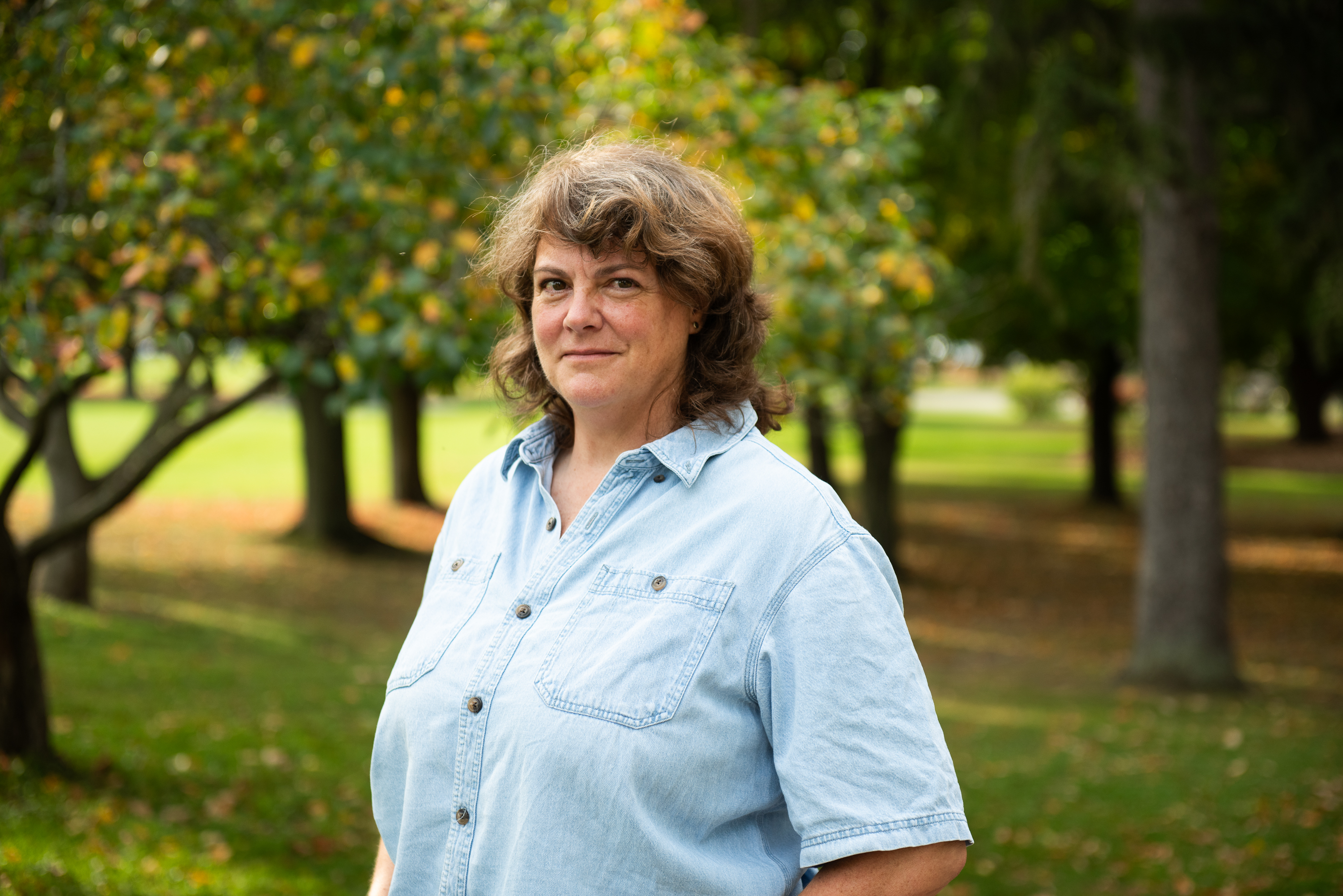
Associate Professor; Acting Associate Vice-President (Macdonald Campus)T: 514-398-7726 | petra.rohrbach [at] mcgill.ca (Email) | Parasitology Building P-109 |
Degrees
BSc (McGill University)
MSc equivalent (Diplom) (Ruprecht-Karls-University Heidelberg, Germany)
PhD equivalent (Dr. rer. nat.) (German Cancer Research Centre, Heidelberg, Germany)
Habilitation, venia legendi (Heidelberg University School of Medicine, Germany)
Short Bio
Petra Rohrbach obtained her PhD from the University of Heidelberg at the German Cancer Research Centre (Germany) in 2000, after completing her BSc at McGill University. She continued her studies as a postdoctoral researcher at the Centre for Infectious Diseases, Heidelberg University School of Medicine (Germany), where she obtained her habilitation early 2008. In the Fall of 2008, she joined McGill University as an Assistant Professor at the Institute of Parasitology and was granted tenure and Associate Professor in 2014. She currently serves as Research Ambassador for the German Academic Exchange Service (DAAD) and is a Visiting Professor at the University of Erlangen-Nuremberg, Germany.
Awards and Recognitions
CFI-LOF Leaders Opportunity Fund Award (2010)
Visiting Professor, Friedrich-Alexander University of Erlangen-Nuremberg, Germany
Active Affiliations
Associate Member, Department of Microbiology and Immunology, McGill
McGill Interdisciplinary Initiative in Infection and Immunity
Research Ambassador for the German Academic Exchange Service (DAAD)
Chair of the Heidelberg Alumni Association in Montreal
Research Interests
Malaria remains a major infectious disease in many parts of the world, currently accounting for an estimated 3 million clinical episodes and up to 0.5 million deaths annually. The human malaria parasite Plasmodium falciparum is a single-celled microorganism with a complex life cycle that invades both host hepatocytes and red blood cells (RBCs). It spends a great proportion of its life cycle within the red blood cell (RBC), a cell comprised mostly of hemoglobin and lacking in nuclei and organelles. The invasion and subsequent modification of the RBC is a crucial step for the survival of this deadly parasite.
To support the dynamic multiplication of malaria parasites, the parasite takes up large amounts of RBC cytosol into a specialized acidic organelle called the digestive vacuole (DV). This organelle breaks down the RBC cytosol’s primary constituent - hemoglobin - to provide itself with nutrients (i.e. amino acids) that are crucial for its growth. Consequently, the parasite’s DV carries out a variety of specialized and critical functions to ensure the survival of the parasite, including hemoglobin degradation, detoxification of oxygen radicals, ion homeostasis, and nutrient and/or solute transport across its membrane. The two most prominent and essential transporters (the multi-drug transporter PfMDR1 and the chloroquine resistance transporter PfCRT) situated on the DV membrane are yet to be fully characterized and play an essential role in drug resistance. The functional role of these transporters, as well as the substrate(s) they transport, remains obscure. It is clear, however, that they did not evolve within the parasite simply to efflux drugs.
The underlying biology of this complex organelle is incomplete and poorly understood. Therefore, the objective of our research program is the development of an in-depth understanding of the molecular and cellular processes of the parasite’s digestive vacuole, as well as a better understanding of drug resistance mechanisms, using modern imaging techniques tailored to P. falciparum and available in our lab.
Current Research
The human malaria parasite Plasmodium falciparum is a single-celled microorganism that invades both human hepatocytes and erythrocytes. The invasion and subsequent modification of the erythrocytes is a basic but crucial step for the survival of this deadly parasite. Although it takes less than 48 h for the parasite to multiply within the infected host cell, the underlying biology is poorly understood. To support the development of malaria parasites, the parasite takes up large amounts of erythrocyte cytosol in a specialized acidic organelle called the digestive vacuole. This organelle digests the erythrocyte cytosol’s primary constituent hemoglobin to provide nutrients (i.e. amino acids) that are crucial to the growth and multiplication of the parasite. The parasite’s digestive vacuole carries out a variety of critical and specialized functions to ensure the survival of the parasite, such as hemoglobin degradation, heme biocrystallization, detoxification of oxygen radicals, ion homeostasis, and nutrient and/or solute transport across its membrane. We are interested in quantifying some of these processes by using live cell imaging techniques to get a better understanding of parasite dynamics in situ and in real time. The maintenance of ion homeostasis (mainly pH) in the parasite, its correlation to the formation and sequestering of hemozoin, as well as transport mechanisms that include two major transporters on the DV membrane (the multi-drug transporter PfMDR1 and the chloroquine resistance transporter PfCRT) have been the main focus of our research.
Current Research Projects
Drug resistance: Chloroquine (CQ) treatment failure in Plasmodium falciparum parasites has been documented for decades but the pharmacological explanation of this phenotype is still not fully understood. Differences in killing kinetics and cell biological consequences in malaria parasites are being investigated after exposure to equipotent [CQ] and show that CQS and CQR parasites display distinct cellular responses when exposed to CQ.
PfMDR1 transporter: Drug resistance has emerged as a major problem in the treatment of all microbial agents and has proven to be a major obstacle for the prevention and treatment of malaria worldwide. We apply live cell imaging and a ‘reverse Fluo-4 imaging’ approach to calculate the overall rate of transport for PfMDR1 in parasites. With this assay, we provide a powerful method to selectively measure the effect of PfMDR1 mutations on substrate transport kinetics. This will be of high significance for future compound screening to test for new drugs in resistant P. falciparum strains.
Hemin and malaria pathology: By promoting alterations in RBC structure and physiology, free hemin, released when the parasite bursts from the RBC, may contribute to the “natural resistance” conferred by hemolytic disorders against malaria and to parasitemia control in the infected hosts. Using cell biology and live cell imaging, we are documenting the effects of hemin on the RBC.
Courses
